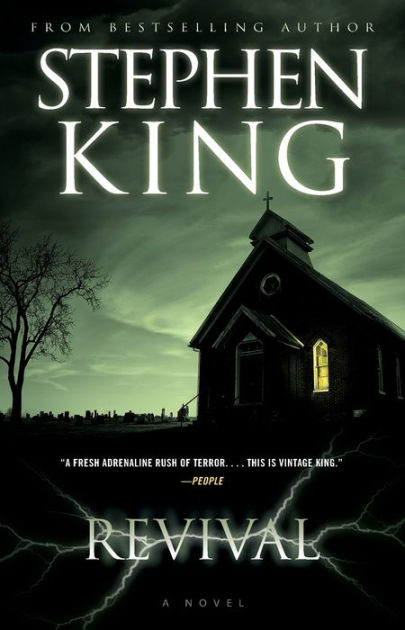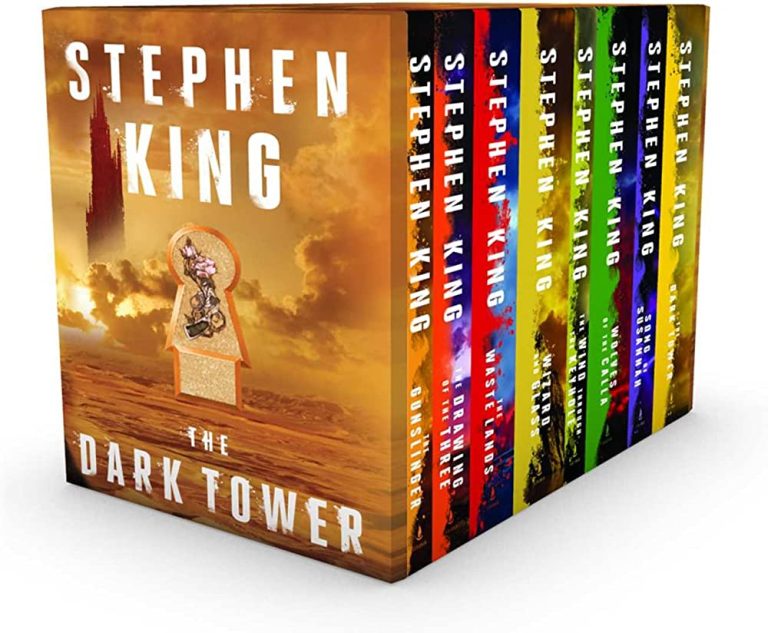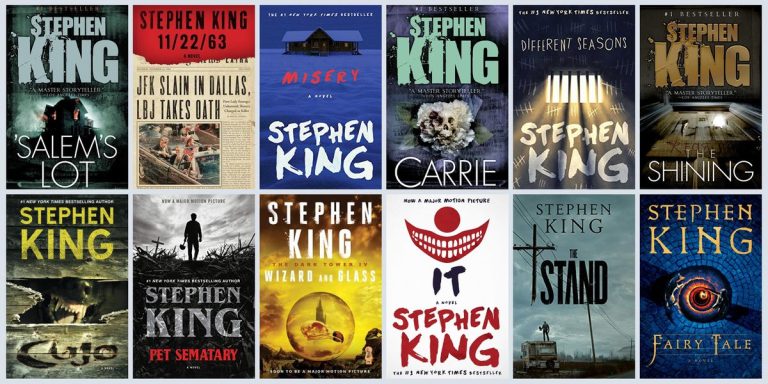Haunted Landscapes: The Atmospheric Settings Of Stephen King’s Books
When you crack open a Stephen King novel, you’re not just entering a world of horror and suspense; you’re stepping into a landscape that is as haunting as the stories themselves. From the eerie small towns of Maine to the desolate highways of America, King’s atmospheric settings play a crucial role in setting the tone and immersing readers in his terrifying tales. In this article, we will explore the haunted landscapes that have become synonymous with Stephen King’s books and discover how these settings add an extra layer of spookiness to his already chilling narratives.
One of the most iconic features of King’s novels is his ability to transform seemingly ordinary places into nightmarish realms. Whether it’s the mist-shrouded forests of Derry in “It” or the isolated Overlook Hotel in “The Shining,” King’s settings come alive with a sense of foreboding and unease. These atmospheric landscapes not only serve as a backdrop for the horrors that unfold but also become characters in their own right, contributing to the overall sense of dread and suspense. So grab your flashlight, prepare to be spooked, and join us as we delve into the haunted landscapes that have made Stephen King’s books the stuff of nightmares.
Discover the eerie and captivating world of Stephen King’s atmospheric settings in his books. From the haunted small town of Derry in “It” to the sinister Overlook Hotel in “The Shining,” King masterfully creates landscapes that become characters in their own right. These haunting locations, often shrouded in mystery and darkness, add depth and intensity to his stories. Immerse yourself in the chilling and atmospheric worlds that King brings to life through his vivid descriptions and skillful storytelling.

Haunted Landscapes: The Atmospheric Settings of Stephen King’s Books
Stephen King is a master of horror and suspense, and one of the key elements that sets his books apart is his ability to create haunting and atmospheric settings. Whether it’s the eerie small town of Derry in “It” or the isolated Overlook Hotel in “The Shining,” King’s landscapes play a crucial role in setting the tone and immersing readers in his terrifying worlds.
The Power of Place
King understands the power of place in storytelling. The settings of his books are not just backdrops, but characters in their own right. They have a palpable presence, evoking emotions and creating an atmosphere of unease. From the desolate Maine woods to the decaying neighborhoods of suburban America, King’s landscapes reflect the darkness and hidden horrors that lie beneath the surface.
In his novel “Pet Sematary,” for example, the ancient burial ground that gives the book its name is a haunting and foreboding place. It exudes a sense of malevolence, tempting the characters to defy the boundaries of life and death with devastating consequences. King’s descriptions of the tangled trees, the shifting shadows, and the eerie silence create a vivid and unsettling image that lingers in the reader’s mind.
The Small Town Secrets
One recurring theme in King’s work is the small town with its deep secrets. These towns, seemingly idyllic on the surface, hide dark and twisted undercurrents. Characters in King’s novels often find themselves trapped in these communities, surrounded by people who are not what they seem.
In “Salem’s Lot,” King explores the sinister secrets lurking in a seemingly ordinary New England town. The dark and brooding atmosphere is set from the very beginning, with descriptions of the empty streets and the imposing Marsten House overlooking the town. As the story unfolds, the town becomes a character itself, with its secrets slowly unraveling and the true nature of its inhabitants revealed.
The Isolation of the Wilderness
In many of King’s books, the wilderness is portrayed as isolating and unforgiving. It becomes a character that tests the limits of human endurance and sanity. Whether it’s the mysterious woods of “The Girl Who Loved Tom Gordon” or the remote island in “Dolores Claiborne,” the natural world is often a place of danger and terror.
In “The Mist,” a novella included in the collection “Skeleton Crew,” King introduces readers to a small town engulfed by an otherworldly fog. As the residents seek refuge in a supermarket, the mist becomes a symbol of their isolation and the unknown horrors that lurk outside. King’s descriptions of the claustrophobic atmosphere and the eerie sounds from the mist create a sense of dread that keeps readers on the edge of their seats.
The Haunted House
No discussion of King’s atmospheric settings would be complete without mentioning the classic haunted house trope. From the iconic Overlook Hotel in “The Shining” to the cursed Black House in “Black House” (co-written with Peter Straub), King knows how to make a house come alive with supernatural terror.
In “The Shining,” the Overlook Hotel is more than just a setting; it’s a malevolent force that preys on the vulnerabilities of its inhabitants. The hotel’s grandeur and opulence are juxtaposed with its dark history and the spirits that haunt its halls. King’s vivid descriptions of the empty ballrooms, the long corridors, and the chilling presence of the hotel itself contribute to the sense of dread that permeates the entire novel.
The Power of Stephen King’s Landscapes
Stephen King’s ability to create atmospheric settings is unparalleled. His landscapes are not simply backdrops, but living, breathing entities that add depth and richness to his stories. Whether it’s a small town with dark secrets or a haunted house teeming with supernatural activity, King’s settings immerse readers in a world of horror and suspense.
Through his masterful use of descriptive language and attention to detail, King transports readers to these haunted landscapes, allowing them to experience the fear and unease firsthand. The power of his settings lies in their ability to evoke emotions and create a sense of foreboding, ensuring that his books continue to captivate and terrify readers around the world.
Key Takeaways – Haunted Landscapes: The Atmospheric Settings of Stephen King’s Books
- The atmospheric settings in Stephen King’s books play a crucial role in creating a haunting and immersive reading experience.
- King’s descriptive writing transports readers to eerie and unsettling landscapes that become characters in their own right.
- From the eerie small town of Derry in “It” to the ominous Overlook Hotel in “The Shining,” King’s settings are filled with a sense of foreboding.
- Nature often takes on a sinister quality in King’s books, with forests, storms, and isolated locations contributing to the overall atmosphere of fear and unease.
- These haunted landscapes not only serve as backdrops for the stories but also reflect the inner turmoil and darkness present in the characters’ lives.
Frequently Asked Questions
What are the atmospheric settings in Stephen King’s books?
Stephen King is renowned for his ability to create haunting and atmospheric settings in his books. From the eerie small towns of Derry and Castle Rock to the isolated cabins in the woods, King’s settings often become characters in their own right. These atmospheric settings are filled with dark secrets, supernatural occurrences, and a sense of dread that permeates every page.
Whether it’s the haunted Overlook Hotel in “The Shining” or the cursed town of Salem’s Lot, King’s atmospheric settings play a pivotal role in setting the tone and enhancing the overall sense of terror in his stories. These settings are often described in vivid detail, with King’s masterful prose painting a picture that is both haunting and unforgettable.
How do the atmospheric settings contribute to the overall theme of Stephen King’s books?
The atmospheric settings in Stephen King’s books are not just background scenery; they are integral to the overall theme of his stories. The dark and foreboding settings mirror the inner turmoil and fears of the characters, amplifying their struggles and adding an extra layer of psychological horror.
These settings also serve to create a sense of isolation and claustrophobia, trapping the characters in a world filled with supernatural forces and unseen dangers. The atmospheric settings act as a catalyst for the supernatural events that unfold and heighten the sense of unease and tension throughout the narrative.
Are the atmospheric settings based on real locations?
While Stephen King often draws inspiration from real locations for his atmospheric settings, they are usually fictionalized versions of these places. King has a knack for taking ordinary, everyday locations and imbuing them with a sense of otherworldliness and dread.
For example, the fictional town of Derry in “It” is inspired by King’s own experiences growing up in Bangor, Maine. Similarly, Castle Rock, another recurring setting in King’s books, is loosely based on the town of Durham, Maine. By fictionalizing these real locations, King is able to create a sense of familiarity while also adding a supernatural twist.
What techniques does Stephen King use to create atmospheric settings?
Stephen King employs a variety of techniques to create his atmospheric settings. One of his key strengths is his ability to vividly describe the physical details of a location, from the weather and landscape to the architecture and history. These rich descriptions immerse readers in the setting, making them feel as though they are experiencing it firsthand.
In addition, King uses symbolism and foreshadowing to enhance the atmosphere. Certain objects or occurrences within the setting may hold deeper meaning or serve as omens of the supernatural events to come. This adds a sense of unease and anticipation to the narrative, keeping readers on the edge of their seats.
Why are atmospheric settings important in horror fiction?
Atmospheric settings are crucial in horror fiction as they help to establish the mood and tone of the story. By creating a sense of foreboding and unease, these settings heighten the reader’s sense of fear and anticipation. They serve to immerse the reader in the world of the story and make the supernatural or horrifying elements feel more tangible and plausible.
Furthermore, atmospheric settings can act as a reflection of the characters’ inner fears and struggles, adding depth and complexity to their journeys. They create a sense of place and atmosphere that lingers long after the story is finished, making the reading experience all the more memorable.
TOP 3 Stephen King Books!!!
Final Summary: The Enchanting Spell of Stephen King’s Haunted Landscapes
As we delve into the world of Stephen King’s books, we are transported to a realm where the line between reality and the supernatural blurs. One of the key elements that make King’s works so captivating is his masterful creation of atmospheric settings. From the eerie small towns of Derry and Castle Rock to the ominous Overlook Hotel, King’s haunted landscapes become characters in their own right, adding depth and intrigue to his stories.
In conclusion, the atmospheric settings in Stephen King’s books play a crucial role in immersing readers in a world of both terror and wonder. Through his vivid descriptions and attention to detail, King brings these landscapes to life, evoking a sense of unease and fascination. Whether it’s the mist-shrouded streets of Maine or the desolate highways stretching through the heartland, these settings become a canvas on which King paints his tales of horror and suspense. So, if you’re ready to embark on a chilling journey through haunted landscapes, pick up a Stephen King novel and prepare to be captivated by the power of his atmospheric storytelling.






